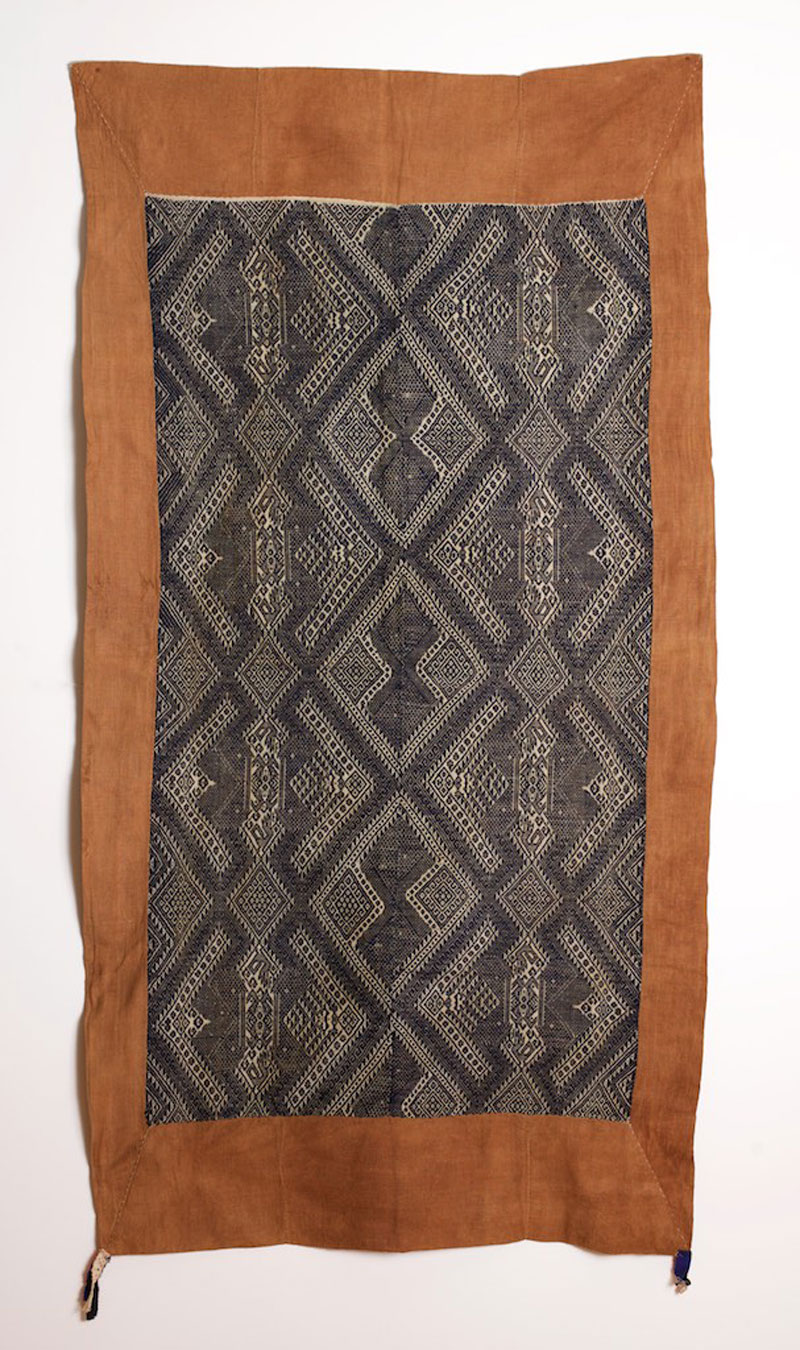
Alternating bands of ikat and supplementary weft are unique to this type of Tai skirt. This one has exceptionally clear ikat and appealing presentation.

The most unusual aspect of this lovely Tai Daeng woman's skirt with exceptionally crisp ikat is that narrow stripes of ikat patterning are contained within the separating bands of supplementary weft.

The absence of supplementary weft weave between the bands of ikat separates this Tai Daeng woman's skirt from the more traditional motif.

Alternating narrow bands of plain weave and ikat patterning create another variety of the traditional Tai Daeng woman's skirt.

Unusual mostly ikat with supplementary weft stripes.

Extremely rare and beautiful, with silk supplementary weft on cotton base.


Woven of natural cotton yarn and natural indigo-dyed cotton, then framed in cotton, this graphic weaving might have been used as a mat for sitting or sleeping, or as a cover for warmth. A family might have several, usually stored in baskets, to be unfolded for its own use or offered as sitting mats to honored guests.


Silk supplementary weft on silk with a full cotton border.


Missing its cotton border.

With silk supplementary weft lower band.

Silk supplementary weft on silk with cotton embellishments.

The crown was affixed to a girl's bun or top knot during an initiation ceremony, then worn throughout her life, especially for marriage and other rituals. Silver pins, secured by thread and beaten human hair, form concentric circles around the perimeter of the crown which has a separately inserted silver disk embossed with a ten-pointed star representing the Umbrella of Fam Tsing, the Three Pure Ones, important Taoist gods. This crown is part of a set with a wrapping cloth and a slide-opening wooden storage box for silver hairpins, yarn and glass streamers.















Alternating bands of ikat and supplementary weft are unique to this type of Tai skirt. This one has exceptionally clear ikat and appealing presentation.
The most unusual aspect of this lovely Tai Daeng woman's skirt with exceptionally crisp ikat is that narrow stripes of ikat patterning are contained within the separating bands of supplementary weft.
The absence of supplementary weft weave between the bands of ikat separates this Tai Daeng woman's skirt from the more traditional motif.
Alternating narrow bands of plain weave and ikat patterning create another variety of the traditional Tai Daeng woman's skirt.
Unusual mostly ikat with supplementary weft stripes.
Extremely rare and beautiful, with silk supplementary weft on cotton base.
Woven of natural cotton yarn and natural indigo-dyed cotton, then framed in cotton, this graphic weaving might have been used as a mat for sitting or sleeping, or as a cover for warmth. A family might have several, usually stored in baskets, to be unfolded for its own use or offered as sitting mats to honored guests.
Silk supplementary weft on silk with a full cotton border.
Missing its cotton border.
With silk supplementary weft lower band.
Silk supplementary weft on silk with cotton embellishments.
The crown was affixed to a girl's bun or top knot during an initiation ceremony, then worn throughout her life, especially for marriage and other rituals. Silver pins, secured by thread and beaten human hair, form concentric circles around the perimeter of the crown which has a separately inserted silver disk embossed with a ten-pointed star representing the Umbrella of Fam Tsing, the Three Pure Ones, important Taoist gods. This crown is part of a set with a wrapping cloth and a slide-opening wooden storage box for silver hairpins, yarn and glass streamers.